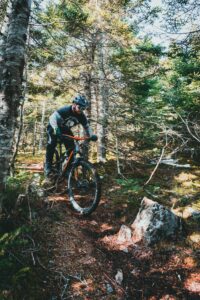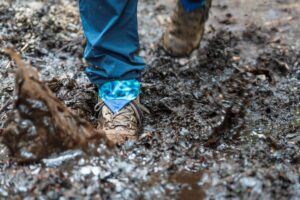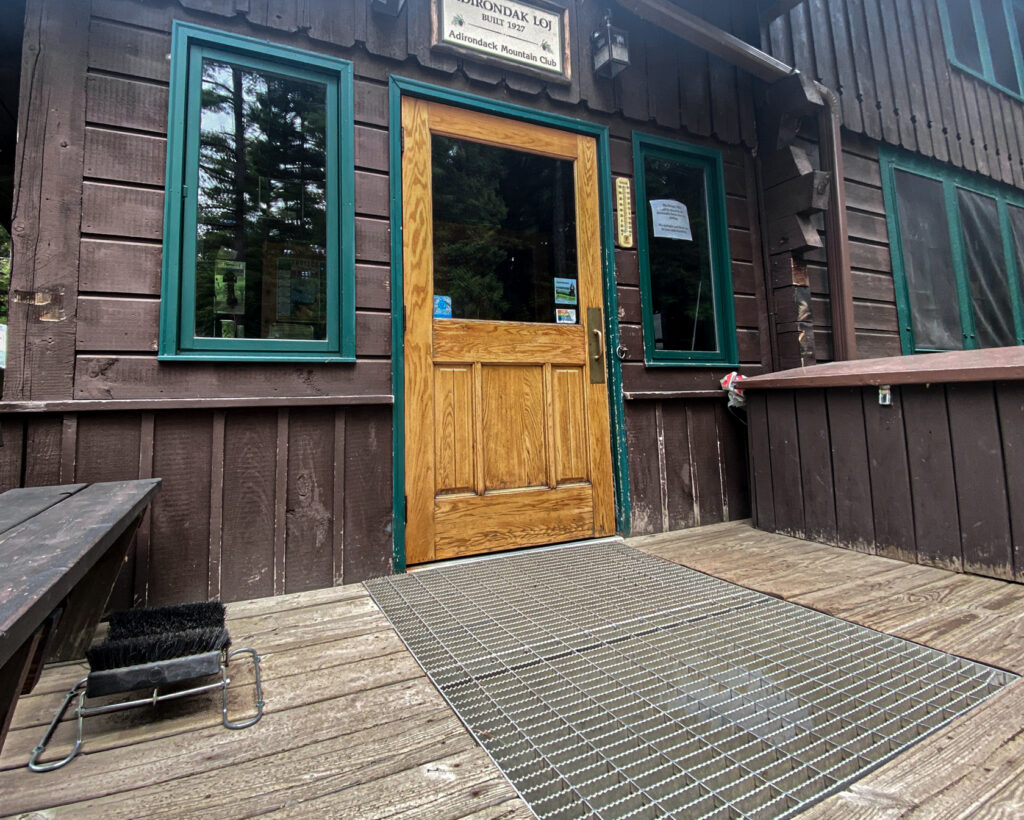Boot Brushes, the Adirondacks, and You
Boot Brushes, the Adirondacks, and You
By Erin Trombley
Think of the things you love about the Adirondack Park. Envision the streams, lakes, fields and forests, the mountaintops and lush valleys, the flora and fauna that lives there, and everything in between. These are the products of ages-old ecosystems, developed over millennia. The animals, plants, insects, and other organisms living there are specialized to allow each other to thrive while also keeping each other in check.
But what happens to these places when something new is introduced? Well, the newcomer often takes over and disrupts the balance of native ecosystems. This is happening right now, and the impacts are devastating. New York has hundreds of threatened or endangered species, of which over 40% are under attack or being harmed by invasive species. Some of these invasives are spread while we explore the outdoors on our boats, on our shoes, and in our bike tire treads.
So, what can we do to stop this? One way to stop the spread of invasives is by using a simple tool: a boot brush.
What are invasive species?

According to a 1999 presidential executive order, an invasive species is 1) non-native to the ecosystem in question, and 2) one whose introduction has a negative economic or environmental impact, or one that is harmful to human health. Cornell University estimates that invasive species cost more than $120 billion annually nationwide.
A 2014 Adirondack Park Invasive Plant Program (APIPP) study and cost analysis showed that just 8 invasive species in or near the Adirondack Park had a direct economic impact of between $468 and $893 million, with the biggest hits in tourism, recreation, and property values. In a single year before the study, 88 organizations invested over $4.2 million, including 12,000 volunteer hours valued at over $700,000, fighting these species in the Adirondacks. These costs are staggering!
What can the average person do to combat the spread of invasive species? One thing you may be aware of is that the use of local firewood helps prevent transportation of invasive insects. A second initiative, clean, drain, dry, helps prevent aquatic invasives from spreading from watercraft and gear. And a third thing you can do is visit a boot brush station to clean off your footwear before you hit the trail or get in your car to return home.
Are boot brushes effective?

Yes! And here’s the evidence. The River to River Cooperative Weed Management Area installed 50 boot brush stations across southern Illinois beginning in 2006. To the North American Invasive Species Management Association (NAISMA) these installations presented an opportunity to study two oft-asked questions: 1) Would people use boot brushes? And, 2) are boot brushes effective in combatting the spread of invasive species?
NAISMA collected piles of dirt that had accumulated around boot brush stations as well as samples from nearby hiker paths. While gathering samples, they noticed significant wear on the brushes. That answered the first question: yes, people were using the boot brush stations. To answer the second question, dirt samples taken from the brushes, and seeds therein, were stratified and grown in a greenhouse to determine what types of seeds were in them.
The soil they gathered from the brushes contained the seeds of 39 plant species, of which 14 were considered “exotic” (non-native). Two of the 14 species were their top invasive species target! Soil from other nearby hiker paths did not contain the same varieties of seeds. This study proved that invasive plant seeds that travel on hiker shoes are removed by the brushes, reducing invasive species along the trail.
So, the next time you hit the trail, remember to play, clean, go to keep invasive plant species from spreading into the forests and mountains of New York and beyond. For more information on how to use a boot brush and do a thorough job of cleaning your boots or trail runners, check out this video from our friends at the National Park Service.
What is ADK doing to stop the spread of invasives?
ADK and APIPP recently partnered to install a boot brush station at our Heart Lake Program Center. When you visit, you can find it on the Adirondak Loj front porch. Every hiker that uses these before and after hitting the trail will help to mitigate the spread of invasive species in and around the High Peaks Wilderness.
ADK also works with APIPP and the New York State Department of Environmental Conservation to run citizen science “early detection” projects that search for and report invasive species in lakes and forests. Volunteering to help spot and eradicate invasives in your own yard, your community, or your favorite wilderness area is the next level of commitment regular people can make, and a great help to the cause of controlling and eliminating these damaging organisms. Click here to see upcoming citizen science programs with APIPP.

Related
ADK Trip Planning Sessions
Need help planning your backcountry adventure? Schedule a personal, online session with an ADK staff […]
Benefits of Visitor Use Management
Since the creation of some of the first parks and protected areas in the United […]
Mud Season: Quick Facts
Just what is mud season? Running anytime from late March into mid-June—it varies each year […]
Spring on the NPT
by Jeffrey Case In the Spring a fuller crimson comes upon the robin’s breast; In the […]

